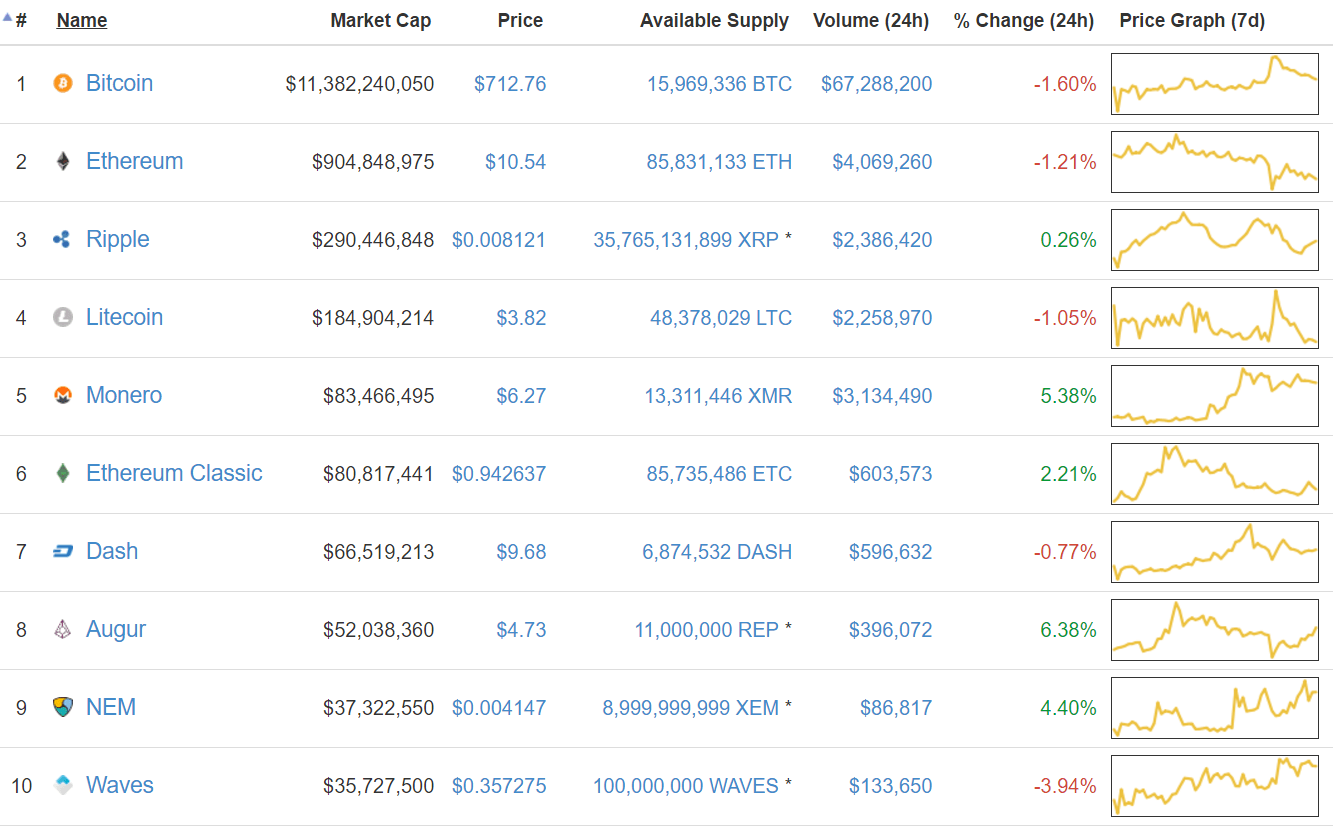
Bitcoin
The one and only, the first and most famous cryptocurrency. Bitcoin serves as a digital gold standard in the whole cryptocurrency-industry, is used as a global means of payment and is the de-facto currency of cyber-crime like dark net markets or ransomware. After seven years in existence, Bitcoin‘s price has increased from zero to more than 650 Dollar, and it‘s transaction volume reached more than 200.000 daily transactions.
There is not much more to say: Bitcoin is here to stay.
Ethereum
The brainchild of young crypto-genius Vitalik Buterin has ascended to the second place in the hierarchy of cryptocurrencies. Other than Bitcoin its blockchain does not only validate a set of accounts and balances but of so-called states. This means that Ethereum can not only process transactions but complex contracts and programs.
This flexibility makes Ethereum the perfect instrument for blockchain -application. But it comes at a cost. After the Hack of the DAO – an Ethereum based smart contract – the developers decided to do a hard fork without consensus, which resulted in the emerge of Ethereum Classic. Besides this, there are several clones of Ethereum, and Ethereum itself is a host of several Tokens like DigixDAO and Augur. This makes Ethereum more a family of cryptocurrencies than a single currency.
Ripple
Maybe the less popular – or most hated – project in the cryptocurrency community is Ripple. While Ripple has a native cryptocurrency – XRP – it is more about a network to process IOUs than the cryptocurrency itself. XRP, the currency, doesn‘t serve as a medium to store and exchange value, but more as a token to protect the network against spam.
Ripple Labs created every XRP-token, the company running the Ripple network, and is distributed by them on will. For this reason, Ripple is often called pre-mined in the community and dissed as no real cryptocurrency, and XRP is not considered as a good store of value.
Banks, however, seem to like Ripple. At least they adopt the system with an increasing pace.
Litecoin
Litecoin was one of the first cryptocurrencies after Bitcoin and tagged as the silver to the digital gold bitcoin. Faster than bitcoin, with a larger amount of token and a new mining algorithm, Litecoin was a real innovation, perfectly tailored to be the smaller brother of bitcoin. “It facilitated the emerge of several other cryptocurrencies which used its codebase but made it, even more, lighter“. Examples are Dogecoin or Feathercoin.
While Litecoin failed to find a real use case and lost its second place after bitcoin, it is still actively developed and traded and is hoarded as a backup if Bitcoin fails.
Monero
Monero is the most prominent example of the cryptonite algorithm. This algorithm was invented to add the privacy features Bitcoin is missing. If you use Bitcoin, every transaction is documented in the blockchain and the trail of transactions can be followed. With the introduction of a concept called ring-signatures, the cryptonite algorithm was able to cut through that trail.
The first implementation of cryptonite, Bytecoin, was heavily premined and thus rejected by the community. Monero was the first non-premined clone of bytecoin and raised a lot of awareness. There are several other incarnations of cryptonote with their own little improvements, but none of it did ever achieve the same popularity as Monero.
Monero‘s popularity peaked in summer 2016 when some darknetmarkets decided to accept it as a currency. This resulted in a steady increase in the price, while the actual usage of Monero seems to remain disappointingly small.
Besides those, there are hundreds of cryptocurrencies of several families. Most of them are nothing more than attempts to reach investors and quickly make money, but a lot of them promise playgrounds to test innovations in cryptocurrency-technology.


This is just the information I am finding everywhere. Thanks for your blog, I just subscribe your blog. This is a nice blog.. cryptocurrency review
ตอบลบ